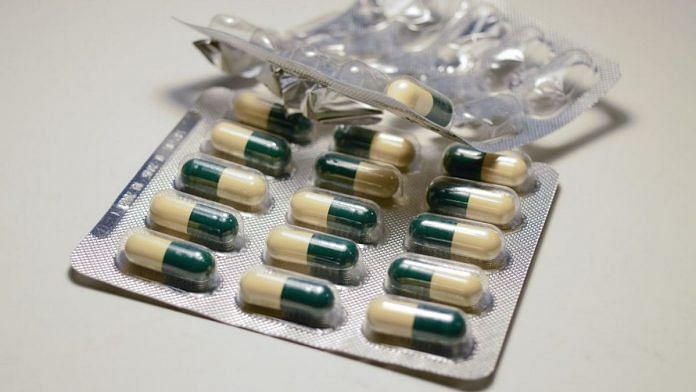Alexander Fleming’s discovery of penicillin in 1928 set off an unprecedented healthcare revolution. With great power – of saving lives with antibiotics – comes great responsibility. India now is trying to shoulder that responsibility and avert an antibiotic apocalypse. We need to save our saviours.
Antibiotics are foundational to public healthcare not just to treat infections, but also because medical procedures like surgeries, organ transplants, treatment of burns, and management of ailments like cancer are heavily dependent on the effectiveness of antibiotics.
Yet, today, we stand on the brink of an antibiotic downfall. Over 7 lakh people are dying each year of illnesses that could ordinarily have been cured with medication. So, what’s going wrong and how do we fix it?
Also read: These common antibiotics have new side-effects & will now come with warnings
When microbes (bacteria, or other microbes) are exposed to antibiotics for prolonged periods in any setting, it triggers mutations and evolutionary selection of strains that are resistant, producing a line of ‘superbugs’ that can no longer be killed by that antibiotic.
Traditionally, the term AMR – or antimicrobial resistance – has been associated with people overusing antibiotics without a prescription from a doctor or stopping mid-way through their course of treatment. In reality, there are many other drivers of AMR, ranging from non-therapeutic use of antibiotics in poultry and livestock, to dumping of antibiotic waste into the environment in the form of pharmaceutical manufacturing waste and hospital waste, and improper disposal of expired medicines.
In 2008, India came into the AMR limelight when a resistant bacterial gene isolated from a Swedish patient who had recently travelled to India was named New Delhi Metallo-ß-lactamase-1 (NDM-1). Since then, this resistant bug has spread to over 100 countries and was even found in the Arctic. While comprehensive data on the prevalence of AMR in India is not available, studies suggest that about 58,319 neonatal sepsis deaths each year can be attributed to antibiotic resistance. India bears a particularly high burden of resistance, and in case of tuberculosis – a disease that leads to nearly 5 lakh deaths in the country annually – India is home to 25 per cent of the multi-drug resistant cases.
Also read: Discarded antibiotics make a comeback as fight against superbugs gathers pace
To tackle the problem holistically with a ‘one-health’ approach, India launched its National Action Plan on AMR (NAP-AMR) in April 2017, urging stakeholders from the ministries of health, environment, water, agriculture and science and technology to work together. Convergence is essential because of the diversity of factors at play, and their impact that spans across sectors.
In the two years since the launch of the NAP, progress has been made on several fronts. The Food Safety and Standards Authority of India (FSSAI) issued in 2017 regulations on permissible levels of antibiotic residue in meat and meat products, effectively restricting irrational use of these drugs in livestock. To encourage responsible use of antibiotics in humans, packaging changes were instituted, and all antibiotics are now marked with a red line. However, on the environmental front, we still have a long way to go.
India is one of the largest manufacturers of antibiotics and manufacturing effluent from the industry poses a serious threat to the future of antibiotics. Experts estimate that nearly 44 kg of ciprofloxacin is dumped into a common effluent treatment plant serving 90 drug manufacturers in Patancheru in Telangana every day, and because these plants are ill-equipped to treat this residue, the nearby rivers showed 1 gram of antibiotic per kilogram of river sediment. The fact that Sweden’s daily consumption of antibiotic is only about 9 kg per day should put this enormous threat in perspective.
The environmental regulations for the pharmaceutical industry do not require companies to remove antibiotic residue from the effluent they discharge. The NAP-AMR called for such standards to be set, but these standards are yet to see the light of day.
Also read: Superbugs win another round after pharma giant quits antibiotics battle
Meanwhile, the pharma industry too seems to be taking a short-term view of the situation, merely complying with existing regulations, where they should instead be actively improving processes and treatments to prevent unnecessary antibiotics from being released along with effluents. It is imperative to keep in mind that ease of doing business is not synonymous with business sustainability. In this case, where the future of antibiotics is at risk, long-term sustainability of antibiotic manufacturers and, by extension, the overall healthcare system depends on more stringent manufacturing practices.
Globally, research and development of new antibiotics has been slow in the past decades. Since the 1980s, no new antibiotic class has entered the market. With the seriousness of AMR dawning upon the world, efforts have been renewed to develop new drugs to replace the ones that are no longer effective, but the process will take several more years. Meanwhile, unless concrete, convergent action is taken, the AMR death toll is estimated to rise to nearly 10 million a year by 2050 and accompanying healthcare costs will skyrocket.
Researchers, policymakers, healthcare experts, environmentalists, agriculturists and the pharmaceutical industry need to work together towards the common goal of safeguarding existing antibiotics until viable alternatives are found. Without urgent corrective action, we may unintentionally render the path shown to us by Fleming worthless.
The author is the healthcare public policy consultant at Chase India. Views are personal.



